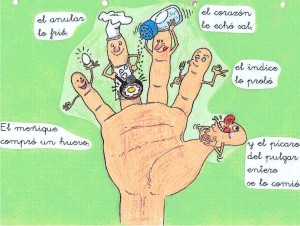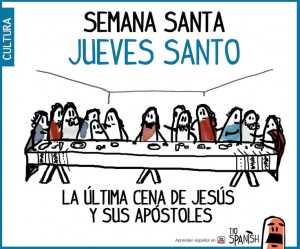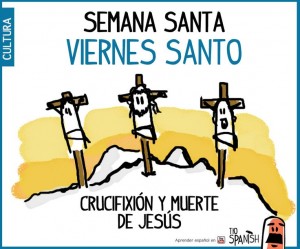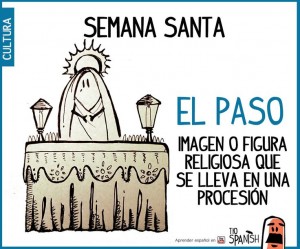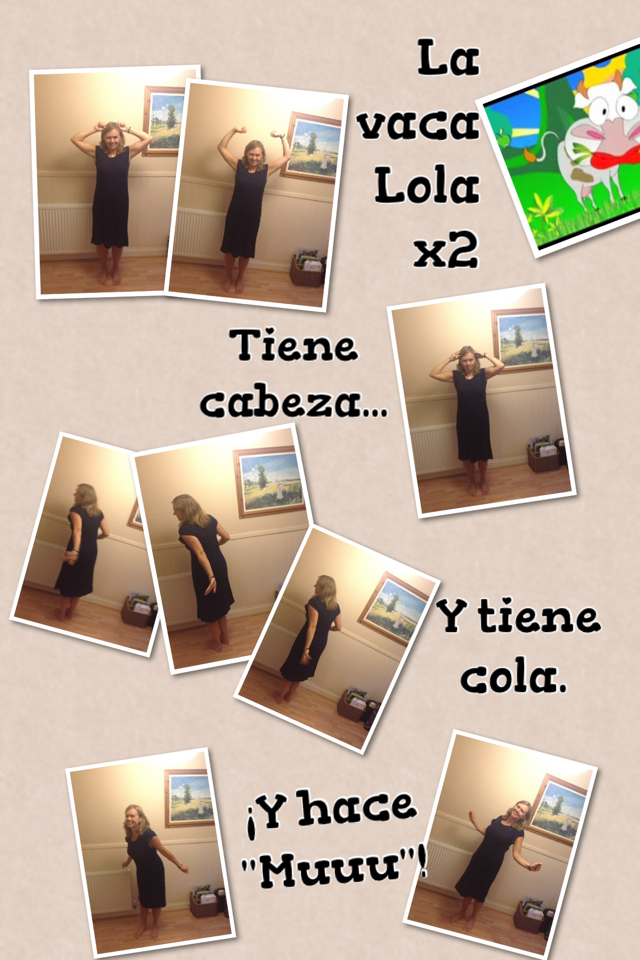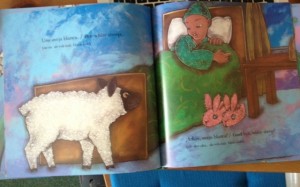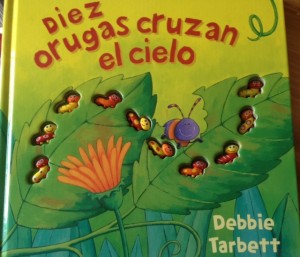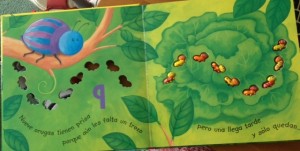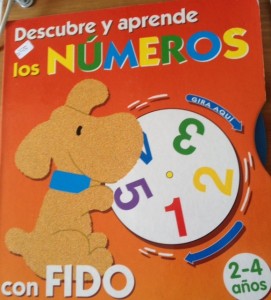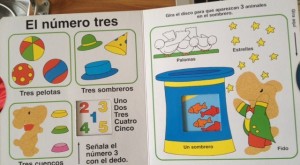Ever since #ililc5 when Janet Lloyd introduced us to this French song for gaining attention and restoring quiet in the classroom, I’ve been searching for a Spanish equivalent. So far I’ve not found one but it got me thinking about using songs and rhymes to create calm.
I have to admit that I tend to use them to either create excitement and action – see posts about La Vaca Lola and Choco Choco la la, two of my favourite songs, or to teach vocabulary – for example, see these posts on Yo quiero ser by Nubeluz or La finca del Tío Ramón and Hojas Hojas that I subtitled using Amara. However, I began to use this song to start all my lessons in KS1 at the start of the year and noted that as well as signalling the start of the Spanish lesson, it focused us all and calmed everyone down.
Part of the appeal is the routine, but I also think that the actions help. And as I was searching, lots of the songs and rhymes I found were either about or used your hands so I thought that warranted a post!
SONGS
I came across some lovely songs that I think would certainly work for restoring calm, focusing attention and creating a ‘brain break’ during class:
1. El pourri de las manos
I love this collection of songs which could be used separately or as a whole! Each is only about 40 seconds long and all can be sung/acted on the carpet as well as in seats. Some helpful (opposites) vocabulary too – content/triste, arriba/abajo, abre/cierra, allí/allá.
I also like the way that it starts very calm and then gets a little more animated but not too much!
You can find the lyrics for this song here.
2. Saco una manito
This is one of the songs included in the above video – I think the ‘band’ will be very popular, and it’s still very chilled with the saxophone and calm actions!
Saco una manito. La hago bailar, / I take out one hand. I make it dance.
La cierro, la abro y la vuelvo a guardar. / I close it, I open it, and I put it away again.
Saco la otra manito. La hago bailar, / I take out the other hand. I make it dance.
La cierro, la abro y la vuelvo a guardar. / I close it, I open it, and I put it away again.
Saco las dos manitos. Las hago bailar, / I take out two hands. I make them dance.
Las cierro, las abro y las vuelvo a guardar. / I close them, I open them, and I put them away again.
3. Dedos
A very very simple song in which you touch each finger together one after the other then all together.
| Palmas con un dedo, palmas con el otro, doy con el más largo, luego con el otro,
viene el más pequeño… ¡Y luego con todos! |
Éste dedo es la mama,éste otro es el papa,el más grande es el hermanocon la niña de la mano,
el chiquito va detrás. Todos salen a pasear |
|---|
4. El zapatero
This song about a shoemaker is the Spanish equivalent of Wind the bobbin up with arm rolling forward and back, pull, pull and then ‘pan pan pan’ as you gently hammer the shoe.
Envolviendo, desenvolviendo,
estira, estira y pan – pan – pan
envolviendo, desenvolviendo,
estira, estira y pan – pan – pan
zapatero a remendar los zapatos sin parar
zapatero a remendar los zapatos sin parar
5. Arramsamsam
I’ve seen this rhyme before but had forgotten about it. A nonsense rhyme, but with hand actions that require some concentration.
Arramsamsam, arramsamsam
guli guli guli guli guli arramsamsam
Alamis, alamis guli guli guli guli guli arramsamsam
6. Con mi dedito
A calm song for saying sí and no, firstly with a finger, then a foot then the head.
Con mi dedito, digo: si, si
Con mi dedito digo: no, no
Digo, digo: si, si
Digo, digo: no, no
Y este dedito se escondió.
Con mi piecito, digo: si, si
Con mi piecito, digo: no, no
Digo, digo: si, si
Digo, digo: no, no
Y este piecito se escondió
Con mi cabeza, digo: si, si
Con mi cabeza, digo: no, no
Digo, digo: si, si
Digo, digo: no, no
Y esta cabeza se escondió.
7. Manos divertidas
Another song about hands with lots of actions to copy!
Ya mis manos se despiertan y ten van a saludar,
se sacuden con gran fuerza y después se enrollan de aqui por allá.
Son mis manos divertidas, siempre salen a jugar
suben por una escalera y después se tiran por el tobogán.
Ellas tocan la bocina, ellas te van asustar
y después de tanto juego, cuando están cansadas,
te invitan a soñar.
If you’re interested in more traditional action songs, have a look at Diversión con juegos de mano which includes Dos manitas, diez deditos and Los deditos.
RHYMES
Continuing on the original thought of bringing the class together, this might work as I’ve yet to find a class that don’t want to wiggle their bottoms given half a chance!
Mis manos hacen clap clap clap
Mis pies hacen stamp stamp stamp
Mi boca hace la la la
Cintura hace cha cha cha
Other rhymes using your hands include Los dedos de las manos and there are several more here including Dedo pulgar (the Spanish version of Tommy Thumb) and Cinco ratoncitos in which one less finger or ‘ratoncitos’ comes out each time to play! And the ever helpful Spanish Playground has some other suggestions too.
I was going to talk about clapping rhymes but I think I’ll save that for another post as they aren’t really very calming 😉
I’ll try some of these out in class and let you know what happens.
PS Over the last two weeks Y2 and I have been exploring world dance and this week we did some ‘flamenco’ arm work. There was utter concentration so perhaps that’s another avenue to explore!
